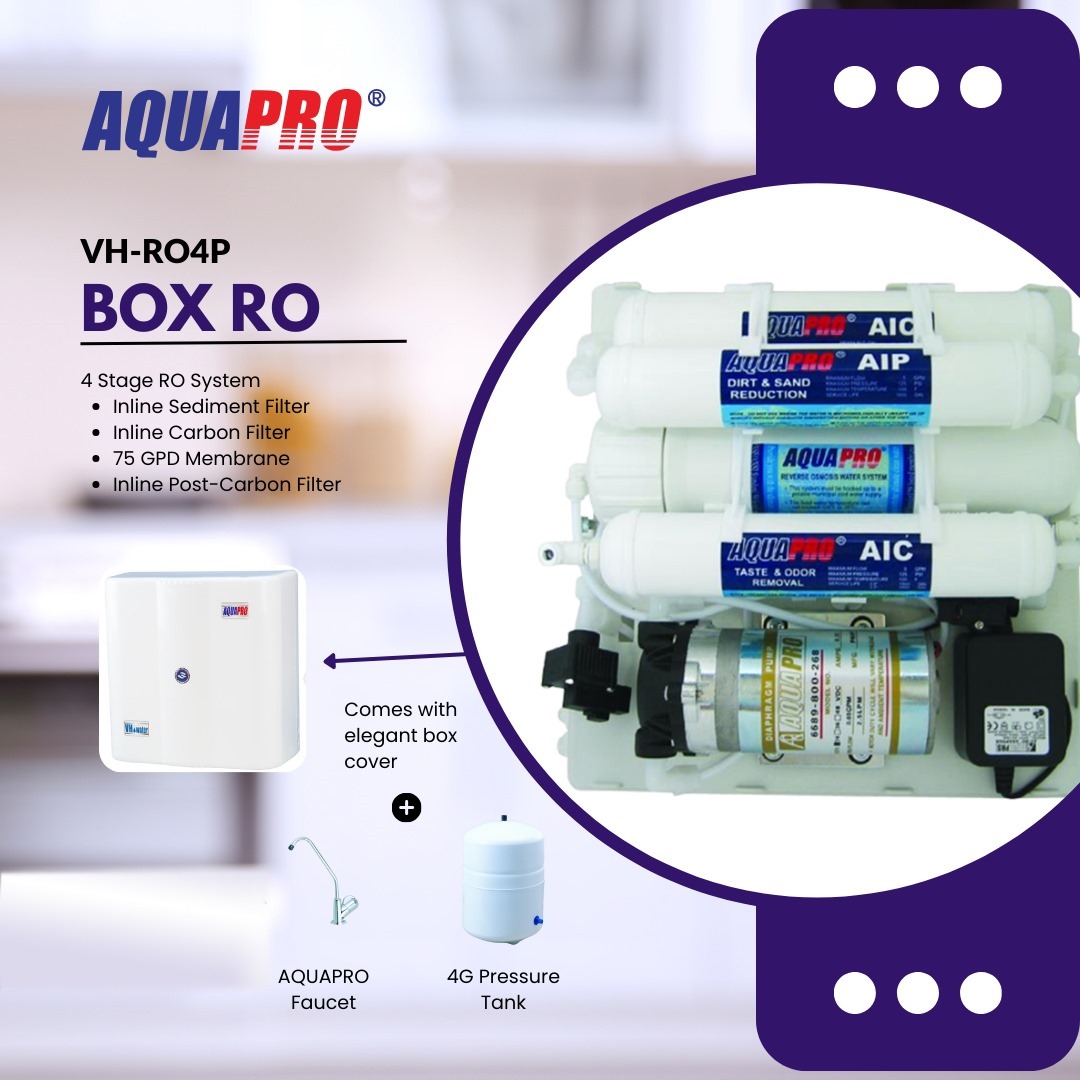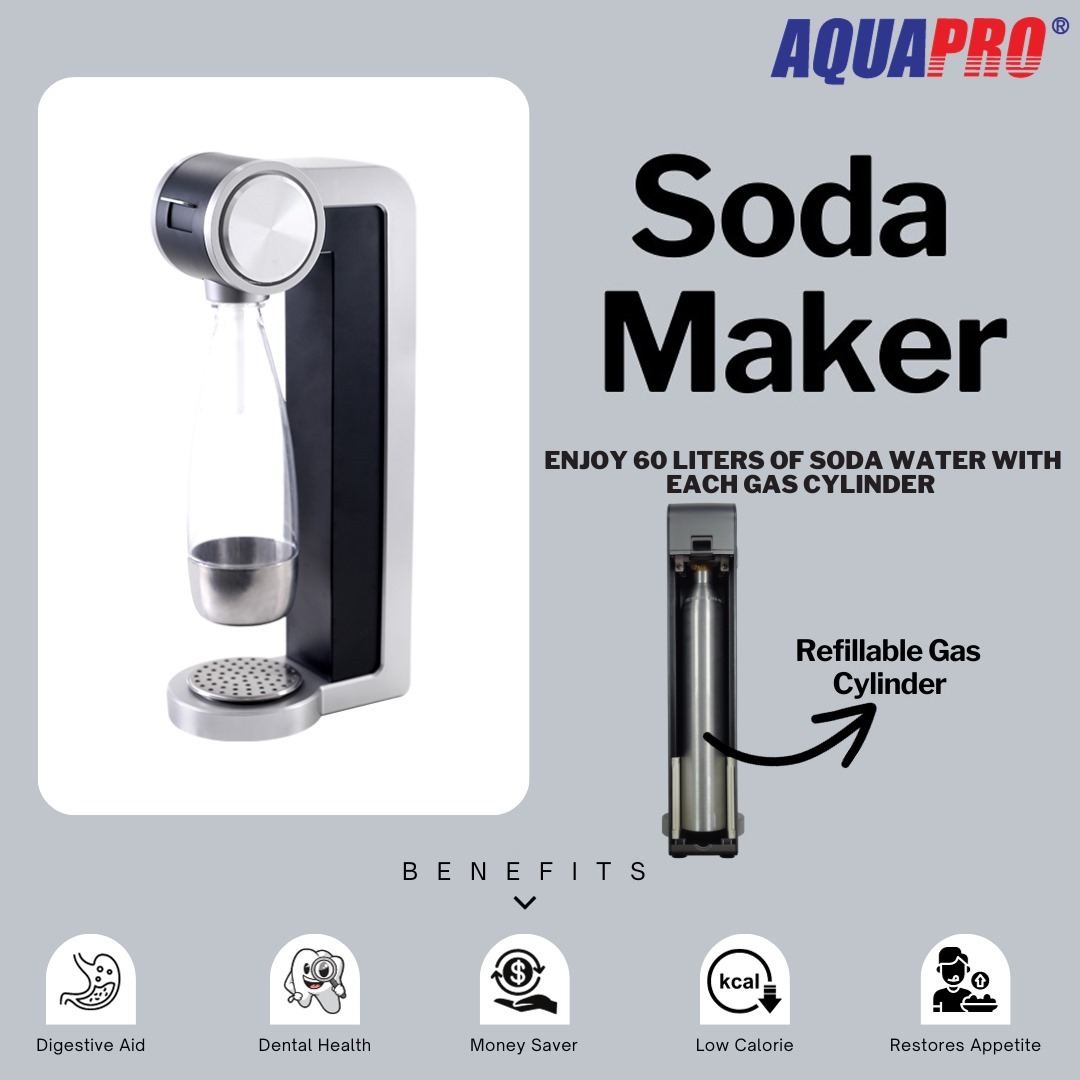Rock Spring Tech, a company that believes in providing comprehensive technical solutions, a wide range of latest products and associated services. Our team has qualified, well-versed experts who know everything about water treatment procedures and even help with the installation process. Different types of chemicals are required for treating water, and we can easily meet your needs. We are the leading water treatment chemicals supplier in Bahrain.
The team at Rock Spring Tech is concerned about quality, health and safety. We leave no stone unturned to meet the needs of the customers. We provide water treatment chemicals that can be used in:
Rock Spring Tech has cemented its position as the leading water treatment supplier in Bahrain. We follow up the latest technologies and even test new methods to deliver the finest solutions. Our team has participated in numerous projects, and now we easily and accurately identify the key needs of the customer. Whether it is the water treatment systems, equipment or products, just share your needs with us. If you are searching for the best water treatment supplier in Bahrain, look no further than us, and you can fully count on our technical team to get the best solutions, products and accessories.
Rock Spring Tech has a very capable and efficient team. We carry a very rich experience that has enabled us to fix all types of issues and generate the best technical solutions. You can fully count on us while searching for the wastewater treatment plant in Bahrain. We provide customized, tailor-made solutions. Our team is fully familiar with the diverse needs of the customers. Our passionate team believes that we must create a greener world by managing waste water treatment. The carbon footprint must be reduced. We deliver quick responses and make use of advanced technology. Our company was started with a vision to support the clients by providing the best wastewater treatment systems. Our hardworking and reliable technical team makes the best possible efforts. While offering technical solutions, we ensure that the needs of the customer are met.
Water is required in a huge volume in industries. The water supplied to the industry should be pure so that it can be used in different activities and procedures. We are the leading industrial water supplier in Bahrain. The wastewater generated by the industries should be properly treated before discharging in the environment.
We help in the installation of the latest industrial wastewater Bahrain systems. The industrial wastewater treatment system supplied by our company is tailored to meet the unique requirement of the client. It can be physicochemical, membrane-based, aerobic/biological, etc. We strongly recommend that wastewater should be treated with the help of the latest technologies such as Ultra Filtration (UF) and followed by Reverse Osmosis (RO). Contact the team of Rock Spring Tech while searching for industrial wastewater Bahrain treatment systems. Look no further than us while searching for water treatment companies in Bahrain. We help with:
Among all water treatment companies in Bahrain, the name of Rock Spring Tech is taken with great regards. It is because we focus on safety, efficiency, quality and reliability. Feel free to contact us and get the latest water treatment systems and products.
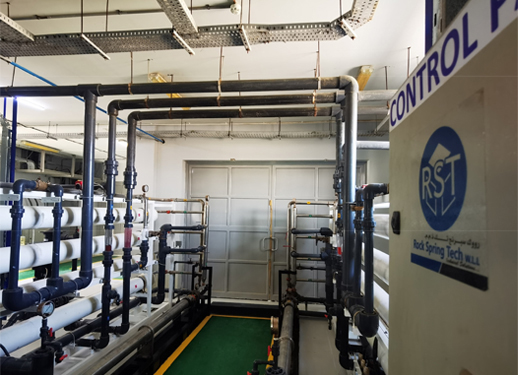 In the field of water treatment, reverse osmosis is an important topic. It's understandable that individuals have high interest in knowing more about it given that it has among the lowest energy needs, highest the rate of recovery, and best rejection rates available.
However, what exactly is reverse osmosis? What is the process? Let's examine the inner workings of an RO system and dissect them so you can learn everything there is to know about RO.
It is the reverse osmosis process, as anybody may surmise. Osmosis is the process by which water passes through a RO membrane (similar to that found within a plant cell or on human skin) to balance the concentration of dissolved particles in the water. Call us for drinking water companies in Bahrain!
The semi-permeable membrane, as shown in the above picture, enables water to pass through but no other molecules bigger than water, such as those found in minerals, salts, and bacteria. Up until the concentration is the same on either face of the membrane and an equilibrium is reached, water flows back and forth.
Take water purification as an example and use this information. We want to drink the water from a canal or lake, but there are too many salt, mineral, and bacterial toxins present to make it safe.
In the field of water treatment, reverse osmosis is an important topic. It's understandable that individuals have high interest in knowing more about it given that it has among the lowest energy needs, highest the rate of recovery, and best rejection rates available.
However, what exactly is reverse osmosis? What is the process? Let's examine the inner workings of an RO system and dissect them so you can learn everything there is to know about RO.
It is the reverse osmosis process, as anybody may surmise. Osmosis is the process by which water passes through a RO membrane (similar to that found within a plant cell or on human skin) to balance the concentration of dissolved particles in the water. Call us for drinking water companies in Bahrain!
The semi-permeable membrane, as shown in the above picture, enables water to pass through but no other molecules bigger than water, such as those found in minerals, salts, and bacteria. Up until the concentration is the same on either face of the membrane and an equilibrium is reached, water flows back and forth.
Take water purification as an example and use this information. We want to drink the water from a canal or lake, but there are too many salt, mineral, and bacterial toxins present to make it safe. 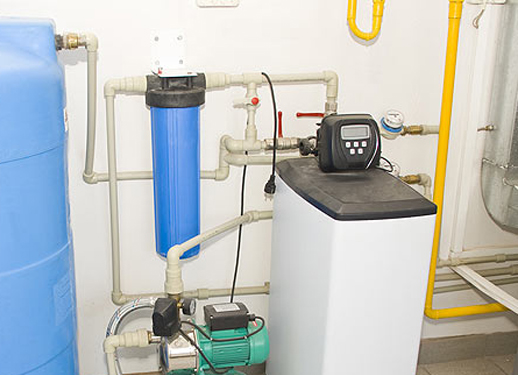 Low levels of dissolved minerals, especially calcium and magnesium ions, are found in soft water. Since hard water has a larger concentration of these minerals, it is frequently seen as superior.
The removal of soap scum, filth, and other accumulation is more successful with soft water than with hard water. This is due to the possibility of sticky remains that is challenging to wipe away from hard water minerals and soap. In several ways, using soft water can reduce costs. As a result of these products' increased efficacy in soft water, it may be possible to use less washing powder and other cleaners. Additionally, it can help avoid the harm that mineral accumulation may bring to items like washing machines, water heaters, etc.
Low levels of dissolved minerals, especially calcium and magnesium ions, are found in soft water. Since hard water has a larger concentration of these minerals, it is frequently seen as superior.
The removal of soap scum, filth, and other accumulation is more successful with soft water than with hard water. This is due to the possibility of sticky remains that is challenging to wipe away from hard water minerals and soap. In several ways, using soft water can reduce costs. As a result of these products' increased efficacy in soft water, it may be possible to use less washing powder and other cleaners. Additionally, it can help avoid the harm that mineral accumulation may bring to items like washing machines, water heaters, etc.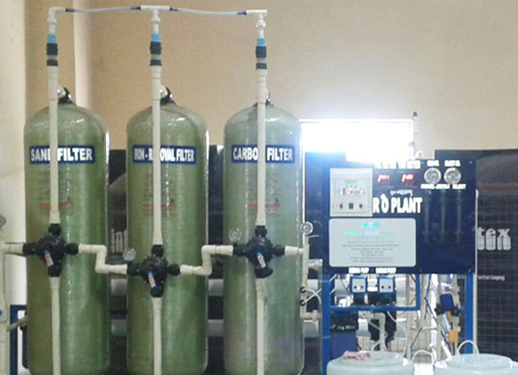 Water may be cleaned via demineralization. The phrase "demineralization" can apply to any water-treatment method that eliminates minerals, although it is often only used to describe ion exchange (IX) procedures that almost entirely eliminate ionic mineral contaminants. It's common to use the terms demineralization and deionization interchangeably.
IX (Ion-Exchange) demineralization is the process of removing dissolved mineral solids. Let's first go through the basics of an IX reaction, then we can discuss the mechanics of demineralization.
In the existence of water, minerals and salts split into their individual ions. These dissolved solids consist of anions, which are negatively charged ions, and cations, which are positively charged ions. Both anions and cations are drawn to counterions or ions with the opposite charge. In an IX column, a resin formed of beads made of plastic with the functional group of ions linked to them is present.
Water may be cleaned via demineralization. The phrase "demineralization" can apply to any water-treatment method that eliminates minerals, although it is often only used to describe ion exchange (IX) procedures that almost entirely eliminate ionic mineral contaminants. It's common to use the terms demineralization and deionization interchangeably.
IX (Ion-Exchange) demineralization is the process of removing dissolved mineral solids. Let's first go through the basics of an IX reaction, then we can discuss the mechanics of demineralization.
In the existence of water, minerals and salts split into their individual ions. These dissolved solids consist of anions, which are negatively charged ions, and cations, which are positively charged ions. Both anions and cations are drawn to counterions or ions with the opposite charge. In an IX column, a resin formed of beads made of plastic with the functional group of ions linked to them is present.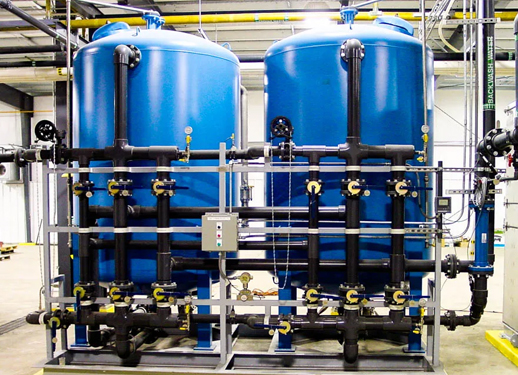 We frequently forget to think about the source or quality of the water because it is such an integral component of our everyday life. We presumptively get the finest results feasible. Filtered water is used in situations when tap water is judged unfit for consumption by many people. The benefit of water filtration is that it allows people to drink good-tasting, contaminant-free water that is readily available and serves as a trustworthy means of hydration. Without it, there is a chance that drinking polluted water may make you sick or that you will have to drink something else that might not be as healthy for you as filtered water.
Although there are several kinds of filtered water, they all provide the fundamental elements of water filtration. This entails purifying the water to remove dangerous chemicals, pesticides, microorganisms, and other contaminants. Although there are filtering methods in place for public water systems, they differ from state to state. It depends on the origin of your water supply, how it is handled, and the caliber of your water pipes. For instance, lead leaking from older filtration systems for water that employs lead pipes may be detrimental to the ultimate distribution of water.
We frequently forget to think about the source or quality of the water because it is such an integral component of our everyday life. We presumptively get the finest results feasible. Filtered water is used in situations when tap water is judged unfit for consumption by many people. The benefit of water filtration is that it allows people to drink good-tasting, contaminant-free water that is readily available and serves as a trustworthy means of hydration. Without it, there is a chance that drinking polluted water may make you sick or that you will have to drink something else that might not be as healthy for you as filtered water.
Although there are several kinds of filtered water, they all provide the fundamental elements of water filtration. This entails purifying the water to remove dangerous chemicals, pesticides, microorganisms, and other contaminants. Although there are filtering methods in place for public water systems, they differ from state to state. It depends on the origin of your water supply, how it is handled, and the caliber of your water pipes. For instance, lead leaking from older filtration systems for water that employs lead pipes may be detrimental to the ultimate distribution of water.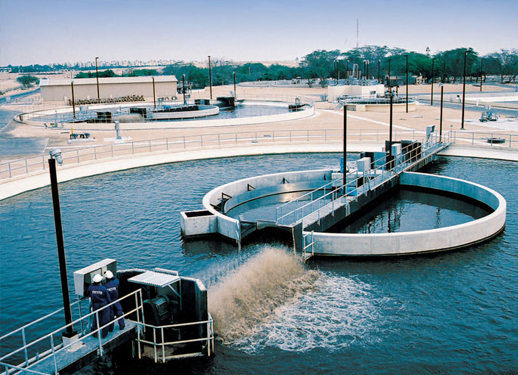 Every day, massive factories, industries, and mills produce tonnes of sewage. Some of this trash is so dangerous that, if it escapes the neighbourhood, it may contaminate land and water and spread numerous diseases. Solid trash may be removed with relative ease, but it is more difficult to clean these wastes of chemical and biological hazards before sending them to secure locations. The assistance of sewage treatment facilities is used for this. I'm coming from some significant tertiary sewage treatment-related factors here.
Since the dawn of civilization, wastewater processing for treatment, and drainage has been an integral element of human society. The industries in certain third-world nations, however, don't have such plants. Without these facilities, managing trash and treating illnesses brought on by air-water pollution would be extremely challenging. There will come a day when there would be no more land or water suitable for human usage. So it is impossible to overstate the significance of wastewater treatment facilities.
Every day, massive factories, industries, and mills produce tonnes of sewage. Some of this trash is so dangerous that, if it escapes the neighbourhood, it may contaminate land and water and spread numerous diseases. Solid trash may be removed with relative ease, but it is more difficult to clean these wastes of chemical and biological hazards before sending them to secure locations. The assistance of sewage treatment facilities is used for this. I'm coming from some significant tertiary sewage treatment-related factors here.
Since the dawn of civilization, wastewater processing for treatment, and drainage has been an integral element of human society. The industries in certain third-world nations, however, don't have such plants. Without these facilities, managing trash and treating illnesses brought on by air-water pollution would be extremely challenging. There will come a day when there would be no more land or water suitable for human usage. So it is impossible to overstate the significance of wastewater treatment facilities.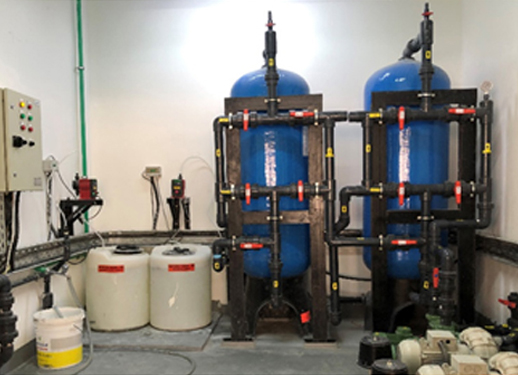 All domestic wastewater, excluding sewage, can be categorised as greywater. The factor that distinguishes between greywater and blackwater is the organic burden. Sewage contains a greater organic burden than greywater. Since kitchen wastewater has a disproportionately high organic burden compared to other sources of wastewater, some people classify it as blackwater. Grey water recycling systems are becoming more popular as people become more aware of the benefits of using recycled grey water in their homes.
Greywater may be put to outstanding use with proper treatment. These uses include washing and cleaning with water as well as watering plants with it. Greywater can be used to irrigate plants. The nutrients in the greywater, such as phosphate, and nitrogen, provide these plants with an excellent supply of food.
Half of the water that was previously utilized can be saved by using a greywater recycling system. We all know that water is very important to us. It is important to protect this resource for future generations, and treating greywater is the most effective way to achieve it.
All domestic wastewater, excluding sewage, can be categorised as greywater. The factor that distinguishes between greywater and blackwater is the organic burden. Sewage contains a greater organic burden than greywater. Since kitchen wastewater has a disproportionately high organic burden compared to other sources of wastewater, some people classify it as blackwater. Grey water recycling systems are becoming more popular as people become more aware of the benefits of using recycled grey water in their homes.
Greywater may be put to outstanding use with proper treatment. These uses include washing and cleaning with water as well as watering plants with it. Greywater can be used to irrigate plants. The nutrients in the greywater, such as phosphate, and nitrogen, provide these plants with an excellent supply of food.
Half of the water that was previously utilized can be saved by using a greywater recycling system. We all know that water is very important to us. It is important to protect this resource for future generations, and treating greywater is the most effective way to achieve it.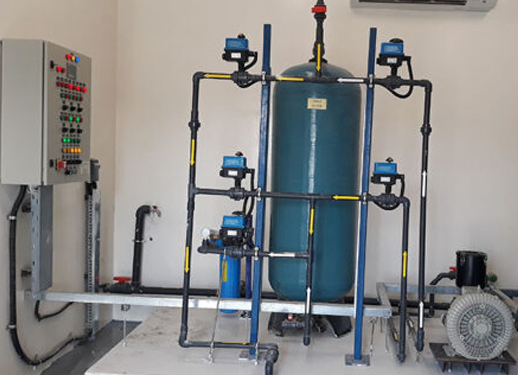 The use of car washes to clean automobiles is ecologically favorable. These franchises are common in urban areas and are always in demand. Contrary to common opinion, washing a car at home has a negative impact on the environment since wastewater including washing powder and oil is dumped into storm water.
The law requires commercial vehicle washes to cleanse wastewater before releasing it into the sewage system. To further safeguard water supplies, a growing amount of vehicle washes are utilizing extra ecologically friendly car wash technology. These car washes may lower their expenditures for mains water and promote their facilities as ecologically friendly.
The inclusion of oil in water is one of the primary distinctions among water recycling systems for Car Wash. Every automobile has an oil leak or grease line below. This oil enters the waste water tank of the vehicle wash when the undercarriage is washed. The majority of equipment vendors only offer a system for recycling water; they seldom offer one for separating oil. The typical filtration systems could function as intended for a while, but eventually, the filters will become clogged, turning the whole recycling system for water into little more than a decorative element.
The use of car washes to clean automobiles is ecologically favorable. These franchises are common in urban areas and are always in demand. Contrary to common opinion, washing a car at home has a negative impact on the environment since wastewater including washing powder and oil is dumped into storm water.
The law requires commercial vehicle washes to cleanse wastewater before releasing it into the sewage system. To further safeguard water supplies, a growing amount of vehicle washes are utilizing extra ecologically friendly car wash technology. These car washes may lower their expenditures for mains water and promote their facilities as ecologically friendly.
The inclusion of oil in water is one of the primary distinctions among water recycling systems for Car Wash. Every automobile has an oil leak or grease line below. This oil enters the waste water tank of the vehicle wash when the undercarriage is washed. The majority of equipment vendors only offer a system for recycling water; they seldom offer one for separating oil. The typical filtration systems could function as intended for a while, but eventually, the filters will become clogged, turning the whole recycling system for water into little more than a decorative element.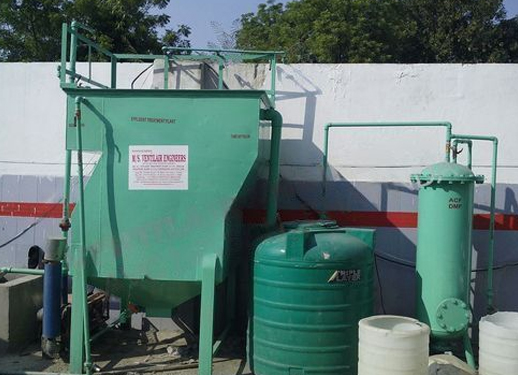 The pipe systems, point-of-use applications, and heating and cooling systems can all suffer damage from contaminants in the source water. Additionally, poor quality of water can reduce equipment life, reduce its dependability, and raise operating expenses.
We are aware of how crucial it is to keep facilities' water in good condition if we want them to run smoothly. Our broad array of water treatment equipment and services guarantees that we have the ideal solution to fulfill the unique requirements of your business, whether it be filtration for disinfection, particle removal, or boiler pre-treatment, or cooling towers.
In several production procedures, including ingredient usage, cleaning, and washing, process water is employed. Daily usage of significant volumes of water makes having the right water quality essential for effective operation and optimal uptime.
The pipe systems, point-of-use applications, and heating and cooling systems can all suffer damage from contaminants in the source water. Additionally, poor quality of water can reduce equipment life, reduce its dependability, and raise operating expenses.
We are aware of how crucial it is to keep facilities' water in good condition if we want them to run smoothly. Our broad array of water treatment equipment and services guarantees that we have the ideal solution to fulfill the unique requirements of your business, whether it be filtration for disinfection, particle removal, or boiler pre-treatment, or cooling towers.
In several production procedures, including ingredient usage, cleaning, and washing, process water is employed. Daily usage of significant volumes of water makes having the right water quality essential for effective operation and optimal uptime.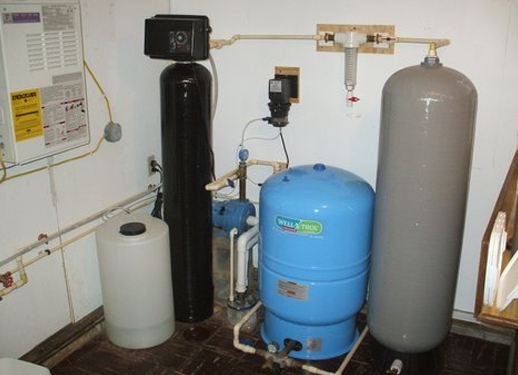 Water from rivers, lakes, and the ground can contain microorganisms. Although not all microbes pose a threat to human health, some have the potential to infect humans and cause illness. We refer to these as pathogens. Drinking water distribution systems can act as a conduit for the transmission of waterborne pathogens, which can then infect people and cause diseases.
Diverse disinfection techniques are employed to render germs inactive in order to fight waterborne illnesses. Chlorination produces water that is safe for use by the general population in conjunction with other water treatment techniques including coagulation, sedimentation, and filtration.
Water may be disinfected using a variety of techniques, including chlorination. This technique was introduced long ago, and it is still in use today. It is a chemical method of disinfection that employs different kinds of chemicals containing chlorine or chlorine to oxidize and clean the source of water that will be used for drinking.
Water from rivers, lakes, and the ground can contain microorganisms. Although not all microbes pose a threat to human health, some have the potential to infect humans and cause illness. We refer to these as pathogens. Drinking water distribution systems can act as a conduit for the transmission of waterborne pathogens, which can then infect people and cause diseases.
Diverse disinfection techniques are employed to render germs inactive in order to fight waterborne illnesses. Chlorination produces water that is safe for use by the general population in conjunction with other water treatment techniques including coagulation, sedimentation, and filtration.
Water may be disinfected using a variety of techniques, including chlorination. This technique was introduced long ago, and it is still in use today. It is a chemical method of disinfection that employs different kinds of chemicals containing chlorine or chlorine to oxidize and clean the source of water that will be used for drinking.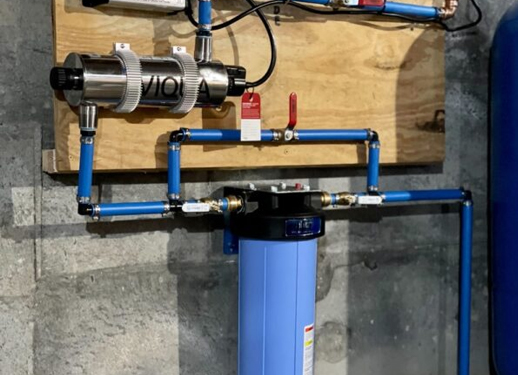 UV systems are specially designed to offer optimal water retention and flow time to successfully eradicate microorganisms by up to 99.9%. This filtering technique may help all water systems and is useful for anything from supplying drinking water for buildings to delivering pure water for medicinal and lab purposes. Our UV systems for water treatment eliminate bacteria, viruses, and any other potentially dangerous components from your drinking water.
Never forget to consider how to increase the quality of your water, regardless of whether it comes from a well or the ground. Both industrial operations and commercial buildings require clean UV-treated water. Even though the water appears clear, it may still be contaminated by bacteria like e. coli or coliform, making you and your co-workers sick.
UV systems are specially designed to offer optimal water retention and flow time to successfully eradicate microorganisms by up to 99.9%. This filtering technique may help all water systems and is useful for anything from supplying drinking water for buildings to delivering pure water for medicinal and lab purposes. Our UV systems for water treatment eliminate bacteria, viruses, and any other potentially dangerous components from your drinking water.
Never forget to consider how to increase the quality of your water, regardless of whether it comes from a well or the ground. Both industrial operations and commercial buildings require clean UV-treated water. Even though the water appears clear, it may still be contaminated by bacteria like e. coli or coliform, making you and your co-workers sick.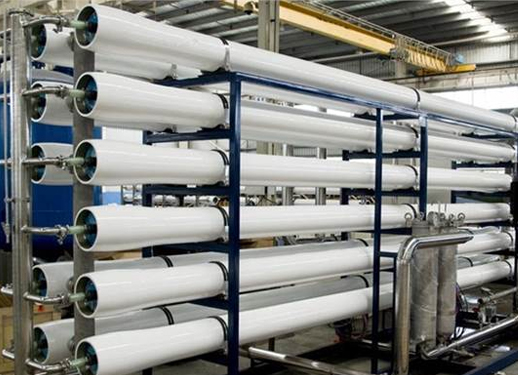 People may select from a wide variety of water purifiers on the market. It's crucial to initially comprehend the sort of water your residence receives. Because it contains more chemicals, solids that are dissolved, and other impurities than soft water does, hard water or water with a high TDS is significantly more challenging to clean. You require reverse osmosis (RO) filtration technology to treat such water.
Through numerous stages of filtration, a RO water purifier's various filters remove various contaminants found in tap water. The RO membrane is the most crucial of these filters. Only pure water can travel through the thin, semi-permeable membrane since it has tiny pores on it. On the other side, the unclean water is expelled from the purifier for water as rejected water.
People may select from a wide variety of water purifiers on the market. It's crucial to initially comprehend the sort of water your residence receives. Because it contains more chemicals, solids that are dissolved, and other impurities than soft water does, hard water or water with a high TDS is significantly more challenging to clean. You require reverse osmosis (RO) filtration technology to treat such water.
Through numerous stages of filtration, a RO water purifier's various filters remove various contaminants found in tap water. The RO membrane is the most crucial of these filters. Only pure water can travel through the thin, semi-permeable membrane since it has tiny pores on it. On the other side, the unclean water is expelled from the purifier for water as rejected water.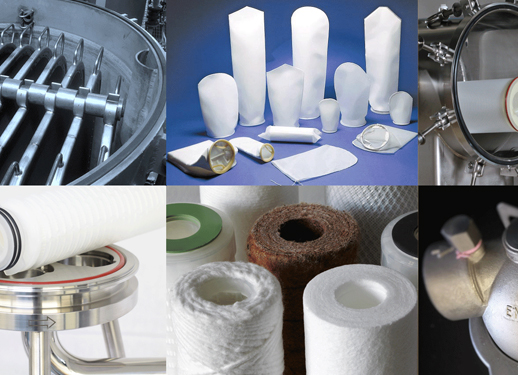 The removal of pollutants and contaminants from gases and liquids is a key function of filters, which are a crucial part of many industrial processes. On the market, there are several different kinds of filters, each with special qualities and uses. The three most popular types of filters—cartridge, bag, and carbon—will be covered in this response.
Small airborne particles and contaminants are eliminated using High-Efficiency Particulate Air filters. They are constructed of a thick, pleated filter medium produced from a variety of substances, including fiberglass, carbon (activated), or other substances. When it comes to applications like air purifiers, hoover cleaners, and industrial operations where clean air is essential, HEPA filters excel because they can remove particles of the size 0.3 microns.
Chlorine, organic compounds, and other pollutants can be removed from liquids and gases using carbon filters. They are made of oxygen-treated activated carbon, which has millions of microscopic holes opened between its carbon atoms. This gives the carbon a huge surface area that may absorb contaminants. In the food and beverage sector, air purification, and water treatment, carbon filters are frequently utilized.
The removal of pollutants and contaminants from gases and liquids is a key function of filters, which are a crucial part of many industrial processes. On the market, there are several different kinds of filters, each with special qualities and uses. The three most popular types of filters—cartridge, bag, and carbon—will be covered in this response.
Small airborne particles and contaminants are eliminated using High-Efficiency Particulate Air filters. They are constructed of a thick, pleated filter medium produced from a variety of substances, including fiberglass, carbon (activated), or other substances. When it comes to applications like air purifiers, hoover cleaners, and industrial operations where clean air is essential, HEPA filters excel because they can remove particles of the size 0.3 microns.
Chlorine, organic compounds, and other pollutants can be removed from liquids and gases using carbon filters. They are made of oxygen-treated activated carbon, which has millions of microscopic holes opened between its carbon atoms. This gives the carbon a huge surface area that may absorb contaminants. In the food and beverage sector, air purification, and water treatment, carbon filters are frequently utilized.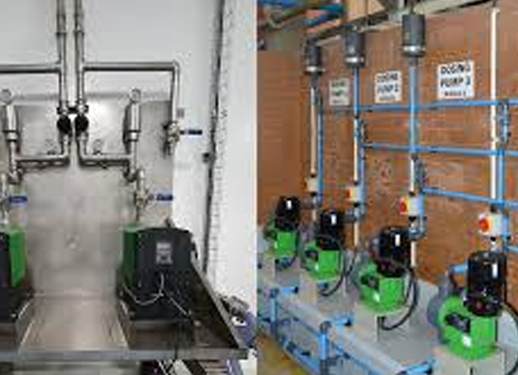 Dosing pumps are utilized in a variety of sectors to precisely and properly inject or distribute liquids and chemicals. They are perfect for applications that need precise chemical dosings, and chemical processing, such as the treatment of wastewater, and the food-beverage sector, since they are designed to deliver a set volume of liquid at a certain rate or flow rate.
A motor is used in dosing pumps to power a piston or diaphragm that forces the fluid through the pumping. After that, a tube or pipe carries the liquid into the system's required location. Depending on the needs of the application, the pumps can be managed using a number of techniques, such as electric, manual, or electronic supervision.
Dosing pumps come in a variety of designs, each with special advantages and characteristics that make it stand out from the competition. Dosing pumps often come in the following varieties:
Dosing pumps are utilized in a variety of sectors to precisely and properly inject or distribute liquids and chemicals. They are perfect for applications that need precise chemical dosings, and chemical processing, such as the treatment of wastewater, and the food-beverage sector, since they are designed to deliver a set volume of liquid at a certain rate or flow rate.
A motor is used in dosing pumps to power a piston or diaphragm that forces the fluid through the pumping. After that, a tube or pipe carries the liquid into the system's required location. Depending on the needs of the application, the pumps can be managed using a number of techniques, such as electric, manual, or electronic supervision.
Dosing pumps come in a variety of designs, each with special advantages and characteristics that make it stand out from the competition. Dosing pumps often come in the following varieties: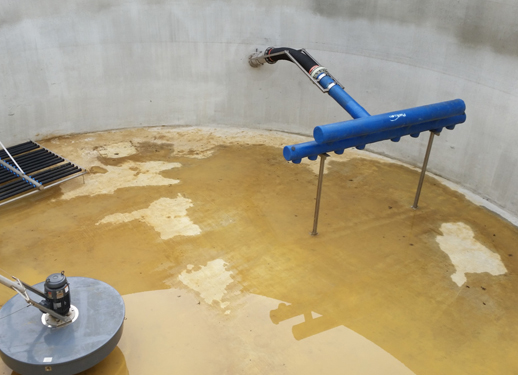 The technique of aerating fluids or water serves to increase the quantity of dissolved oxygen present in the liquid. Aquaculture, industrial activities, wastewater treatment, and other industries all employ aeration items that are created to make this process easier.
Aeration products' main purpose is to raise the liquid's dissolved oxygen content. This is significant because a large number of microorganisms, including bacteria and protozoa, depend on oxygen for survival and growth. Aeration solutions assist in giving these bacteria the oxygen they require by bringing air into the liquid state, which can enhance the system's general health.
Additionally, aeration products may be utilized to mix fluids, which is useful in processes like wastewater treatment. By ensuring that oxygen is evenly distributed throughout the liquid during mixing, it is possible to make sure that the entire system is adequately aerated. Furthermore, mixing can aid in preventing the stratification of liquid layers, which can result in dead zones with low oxygen levels.
The technique of aerating fluids or water serves to increase the quantity of dissolved oxygen present in the liquid. Aquaculture, industrial activities, wastewater treatment, and other industries all employ aeration items that are created to make this process easier.
Aeration products' main purpose is to raise the liquid's dissolved oxygen content. This is significant because a large number of microorganisms, including bacteria and protozoa, depend on oxygen for survival and growth. Aeration solutions assist in giving these bacteria the oxygen they require by bringing air into the liquid state, which can enhance the system's general health.
Additionally, aeration products may be utilized to mix fluids, which is useful in processes like wastewater treatment. By ensuring that oxygen is evenly distributed throughout the liquid during mixing, it is possible to make sure that the entire system is adequately aerated. Furthermore, mixing can aid in preventing the stratification of liquid layers, which can result in dead zones with low oxygen levels.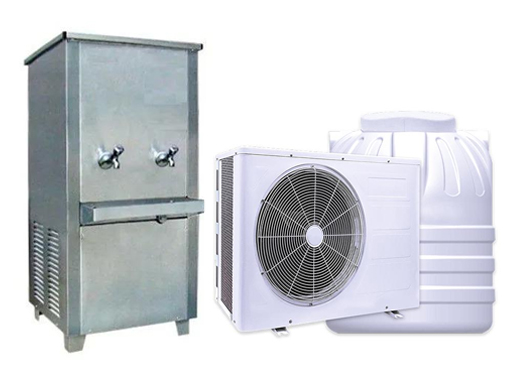 Electrical appliances that have been used to provide chilled drinking water are called water coolers. They may be found in many different areas, such as homes, workplaces, educational institutions, and public spaces. The main purpose of a water cooler is to offer a readily available source of cool, clean water that is always refreshing.
There are several varieties of water coolers on the market places, and each of them is found with special features and advantages. The following are the most typical types of water coolers:
A water container that is set on the top of the cooler is used to dispense water in coolers that utilize bottled water. They may be found in both countertop and freestanding types and are often utilized in homes and workplaces.
A constant supply of cold water is offered via point-of-use water coolers, which are directly linked to the water supply. It takes a specialist to install them, and they are frequently utilised in business settings.
Electrical appliances that have been used to provide chilled drinking water are called water coolers. They may be found in many different areas, such as homes, workplaces, educational institutions, and public spaces. The main purpose of a water cooler is to offer a readily available source of cool, clean water that is always refreshing.
There are several varieties of water coolers on the market places, and each of them is found with special features and advantages. The following are the most typical types of water coolers:
A water container that is set on the top of the cooler is used to dispense water in coolers that utilize bottled water. They may be found in both countertop and freestanding types and are often utilized in homes and workplaces.
A constant supply of cold water is offered via point-of-use water coolers, which are directly linked to the water supply. It takes a specialist to install them, and they are frequently utilised in business settings.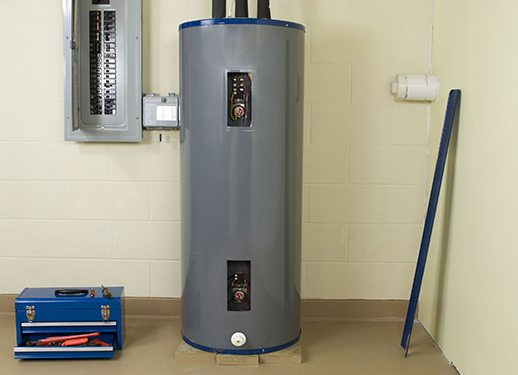 For our health and everyday needs, water heaters are crucial. Water heaters enable us to wash dishes quickly or rehydrate under the shower after a chilly day outside, even if we occasionally take them for granted. With warm cycles, they even have an impact on our washing machines, helping to preserve the quality of our garments. We would have to manually heat the water if we didn't have a water heater, which could be simply a waste of time, energy, and labor. For this reason, these systems are essential and useful in your house.
As users, we frequently overlook such systems until a problem arises and interferes with our normal routines. Although consumers frequently get their regular plumbing maintenance checked, water heater check-ups are frequently overlooked. This may subsequently result in serious (and perhaps deadly) problems, costing you a lot of money to fix or replace.
For our health and everyday needs, water heaters are crucial. Water heaters enable us to wash dishes quickly or rehydrate under the shower after a chilly day outside, even if we occasionally take them for granted. With warm cycles, they even have an impact on our washing machines, helping to preserve the quality of our garments. We would have to manually heat the water if we didn't have a water heater, which could be simply a waste of time, energy, and labor. For this reason, these systems are essential and useful in your house.
As users, we frequently overlook such systems until a problem arises and interferes with our normal routines. Although consumers frequently get their regular plumbing maintenance checked, water heater check-ups are frequently overlooked. This may subsequently result in serious (and perhaps deadly) problems, costing you a lot of money to fix or replace. We value your patronage and confidence in our goods and services. As a top provider of solutions for the wastewater treatment and oil field industries, we recognize how crucial it is to guarantee that your systems and equipment are running as effectively and dependably as possible. We are happy to provide an Annual Maintenance Contract for the items we sell to assist you in achieving this.
We value your patronage and confidence in our goods and services. As a top provider of solutions for the wastewater treatment and oil field industries, we recognize how crucial it is to guarantee that your systems and equipment are running as effectively and dependably as possible. We are happy to provide an Annual Maintenance Contract for the items we sell to assist you in achieving this.Advantages of our AMC
We would be delighted to go over our AMC alternatives with you in further depth and offer you a price that is tailored to your particular requirements. To learn more, don't hesitate to get in touch with us at any time.
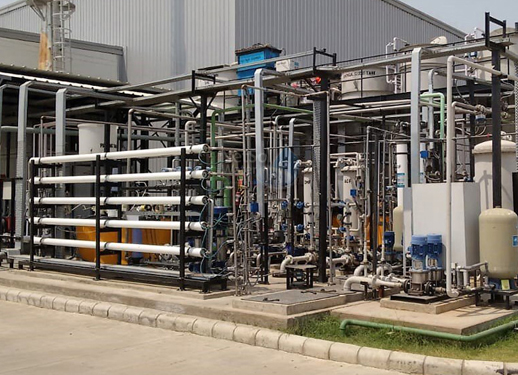 The effective and dependable functioning of your systems and equipment is essential to your business, and as a top provider of goods for the oil field and water treatment industries, we understand this. Because of this, we are happy to provide an O&M agreement for our products.
The effective and dependable functioning of your systems and equipment is essential to your business, and as a top provider of goods for the oil field and water treatment industries, we understand this. Because of this, we are happy to provide an O&M agreement for our products.If you'd like to learn more about our O&M contract alternatives, we'd be pleased to do so. We'd also be happy to provide you with a price that is tailored to your particular requirements. Contacting us is always welcome if you want to find out more.
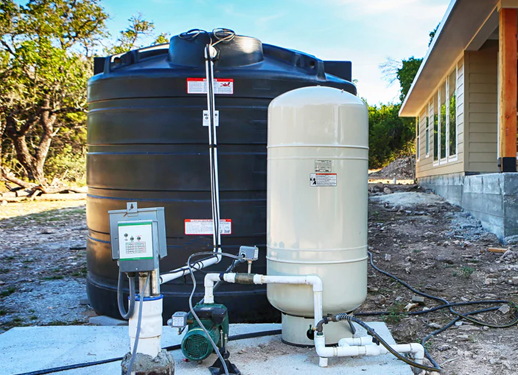 An object intended to keep liquids or gases that are under pressure is called a pressure tank. Hydraulic systems, compressed air systems, and water supply systems are just a few of the areas where it is frequently employed.
A pressure tank's primary function is to keep the system it is attached to the constant pressure. The pressure tank helps to maintain the proper pressure by releasing the fluid or gas that is held within when the system requires it. In contrast, the pressure tank stores extra gas or fluid until it is required again when the demand for the substance drops.
From small tanks for household use to enormous industrial tanks that may hold gallons of gas or fluid, pressure tanks are available in a variety of shapes and sizes. Steel is used in the construction of some pressure tanks, however, fiberglass or plastic can also be used.
An object intended to keep liquids or gases that are under pressure is called a pressure tank. Hydraulic systems, compressed air systems, and water supply systems are just a few of the areas where it is frequently employed.
A pressure tank's primary function is to keep the system it is attached to the constant pressure. The pressure tank helps to maintain the proper pressure by releasing the fluid or gas that is held within when the system requires it. In contrast, the pressure tank stores extra gas or fluid until it is required again when the demand for the substance drops.
From small tanks for household use to enormous industrial tanks that may hold gallons of gas or fluid, pressure tanks are available in a variety of shapes and sizes. Steel is used in the construction of some pressure tanks, however, fiberglass or plastic can also be used.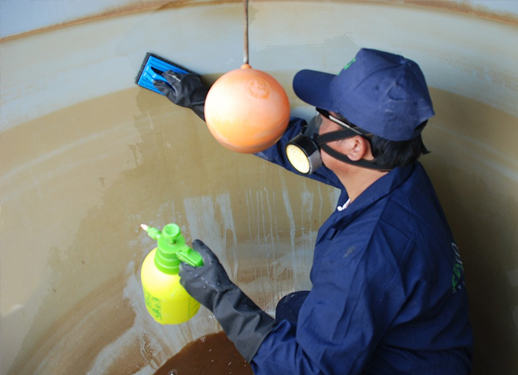 We cannot survive without water, which is unquestionably the most significant aspect of our life. In addition to quenching our thirst, water is crucial for cleaning, cooking, and maintaining personal cleanliness.
Since it is correct that water nourishes us, eliminates toxins from the body, and benefits us in countless other ways, drinking polluted water may also lead to a number of ailments. For this reason, it's crucial that the water we use to cook with or drink must be completely pure and clean. Since these tanks are located in our homes and offices, it is crucial to regularly clean them.
If the tank for water storage is not washed often, it may cause pollutants in the water that may contain numerous dangerous microorganisms. So, a number of illnesses, such as dysentery, cholera, gastritis, and others, can spread through contaminated water. If the tanks aren't kept clean, they can easily get contaminated over time, which could be detrimental to cleaning and even to eating.
We cannot survive without water, which is unquestionably the most significant aspect of our life. In addition to quenching our thirst, water is crucial for cleaning, cooking, and maintaining personal cleanliness.
Since it is correct that water nourishes us, eliminates toxins from the body, and benefits us in countless other ways, drinking polluted water may also lead to a number of ailments. For this reason, it's crucial that the water we use to cook with or drink must be completely pure and clean. Since these tanks are located in our homes and offices, it is crucial to regularly clean them.
If the tank for water storage is not washed often, it may cause pollutants in the water that may contain numerous dangerous microorganisms. So, a number of illnesses, such as dysentery, cholera, gastritis, and others, can spread through contaminated water. If the tanks aren't kept clean, they can easily get contaminated over time, which could be detrimental to cleaning and even to eating.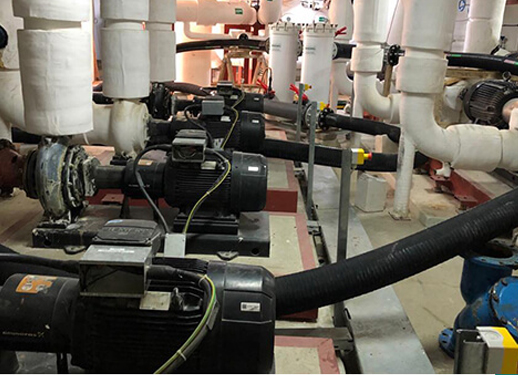 Chillers are essential components of commercial and industrial cooling systems. However, you can't just set them aside and let them take care of themselves; they require routine upkeep to be functional. This article provides some straightforward advice on how to get the most of your chiller:
Using the incorrect inhibitor in the MPG solution provides a contamination risk for chillers in locations where there might be contact with human, alike in food preparation facilities.
It's crucial to regularly sample water from all of the possible access point and not just one site because the chiller system might deteriorate and corrode anywhere. Pay close attention to all product-fluid interfaces, heat exchangers, cooling jackets, and other high-risk regions.
If you don't measure the pH level when you do routine water checks, the operation of the system may suffer. Incorrect pH values outside of this range may indicate that insufficient inhibitors are being employed or that the glycol level is excessively concentrated. Chiller pH sensitivities too much based on the present material, but usually, the suggested limits are 8.0 to 8.5.
Chillers are essential components of commercial and industrial cooling systems. However, you can't just set them aside and let them take care of themselves; they require routine upkeep to be functional. This article provides some straightforward advice on how to get the most of your chiller:
Using the incorrect inhibitor in the MPG solution provides a contamination risk for chillers in locations where there might be contact with human, alike in food preparation facilities.
It's crucial to regularly sample water from all of the possible access point and not just one site because the chiller system might deteriorate and corrode anywhere. Pay close attention to all product-fluid interfaces, heat exchangers, cooling jackets, and other high-risk regions.
If you don't measure the pH level when you do routine water checks, the operation of the system may suffer. Incorrect pH values outside of this range may indicate that insufficient inhibitors are being employed or that the glycol level is excessively concentrated. Chiller pH sensitivities too much based on the present material, but usually, the suggested limits are 8.0 to 8.5.